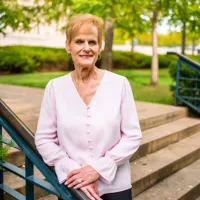
Mind-Blowing Boomer Generation Stats You Simply Must Not Ignore
If the average attender in a local main line church were asked which generation is most involved in discipleship communities, what do you think their answer would be? In my experience, that question is answered by suggesting that the Boomer Generation would have the highest engagement in a discipleship community. The one answering the question would go on to clarify that in the not-too-distant past, it would have been the Silent Generation. However, many of those precious saints are now homebound, living in nursing homes, or have already gone to be with Jesus.
What’s interesting in examining this question is how each person might define a discipleship community differently. In the Growing Together report, being in a discipleship community is defined by both being discipled and discipling others. In addition, the qualifiers for being discipled include holding one another accountable, offering each other encouragement and support, and helping each other to grow spiritually.
Often when asked, a person automatically associates Sunday school attendance with a discipleship community. While there may be some Sunday school experiences that may indeed meet the definition and criteria offered in the Growing Together report, it’s my experience in consulting with hundreds of churches across the country that this would be a rare occurrence.
For example, I was once asked to offer a lesson in an adult Sunday school class of predominantly Silent and Boomer Generation attenders. The class time was an hour. I asked how much of that hour would be dedicated to the teaching time. I was offered 15 minutes for teaching. During the first 15 minutes the attendees filled their coffee cups, found their seats, and settled in. The next 30 minutes were dedicated to announcements, joys, and concerns leaving the final 15 minutes for teaching. Most often the teaching was lecture style. While there was encouragement and support present, there was no interaction, encouragement, support, or accountability in discipling one another. This was the most tenured group in the church who had the most influence, power, and were making the majority of the decisions. And, this is how they had been discipled for decades.
Surprisingly, the Growing Together report revealed that younger Christians are much more likely to be in discipleship communities. The data indicated that 39% of Gen Z and 44% of Millennials are in discipleship communities while only 27% of Generation X and 14% of Boomers are in discipleship communities. A significant percentage of Christians are only being discipled, but not discipling others: 35% of Gen Z, 27% of Millennials, 27% of Gen X, and 28% of Boomers. The most staggering statistic is that 41% of Christian Gen X and 53% of Boomers are not engaged in any kind of discipleship community!
What resonates with you from these statistics as it relates to your church? How many in your congregation are engaged in a discipleship community as defined in Growing Together? Does your church have an intentional pathway to assist disciples to grow in their faith? (If you need a resource to begin helping your church create a discipleship pathway, consider this webinar.) What are you taking away from the Growing Together report and who will you share it with today?


